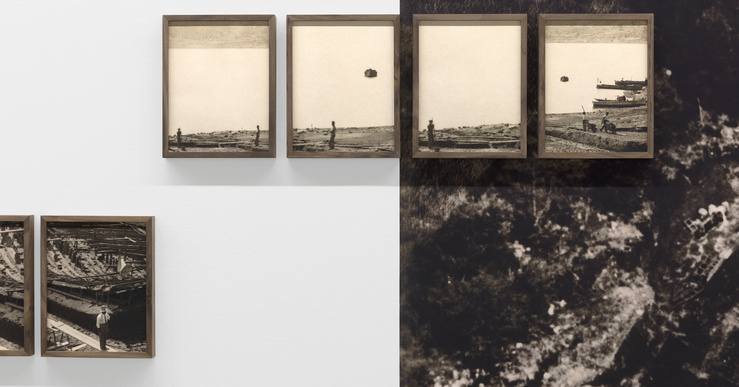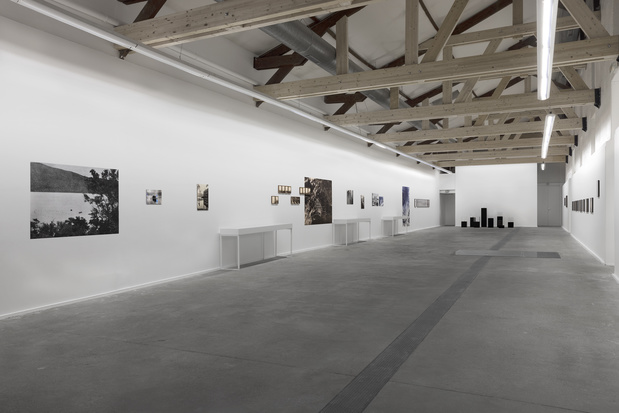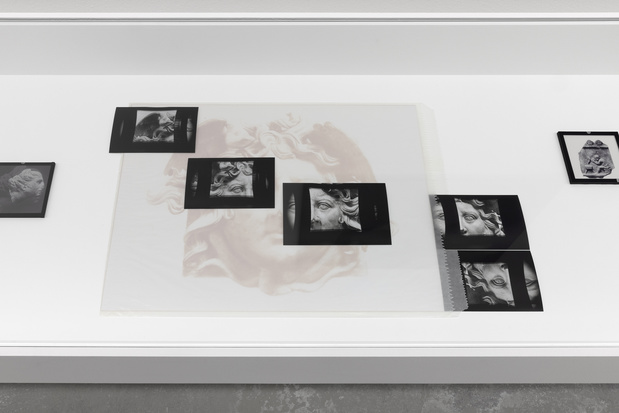
Isabelle Giovacchini — Cpif, Pontault-Combault
Throughout her journey, Isabelle Giovacchini’s solo exhibition, Plongées, fragments, répliques, carries her images like a breath that vibrates to the rhythm of a double visual and conceptual injunction. Between appearance and disappearance, the artist reveals emergence and withdrawal as two sides of a shared temporality.
Here, symbols, signs, or writing are rare; what remain are codes, technical numbers that themselves become motifs, as though the means of appearance had taken on the form of the subject only to dissolve it in its own radiance. Until the act itself—the effort toward the image—takes the light, and thereby inscribes itself. In this struggle between the subject of the work and the subject of its creation (the artist as much as her technique), the spectator may well be the only way out…
Never merging into a synthesis… Deprived of narrative support, the gaze shifts its attention, surrendering to pure sensory experience. Her devices, rich in subterranean theory, erase their marks of authority and, through the fluidity of their making, unfold a form of thought that is felt before it is understood, that spreads before it asserts itself. Entrusting us to intuition, her narrative, too, invents itself in reverse. Sometimes parallel to history, sometimes born from the manipulation of old images, it arises like a memory re-forming beneath one’s fingers. Manipulation—essential here—exhausts its field of possibilities between alteration and revelation.
Once again, a way of rewriting with other lights. And silences. The installation thus echoes, in its architectural composition, the codes of the narrative fresco; lines and image formats rhythm the unfolding of the space like a slow score in which each image is a suspended note. At the visitor’s discretion—whether choosing to learn about the artist’s process before or after—the immersion proceeds, with or without a safety rail, into compositions of rare precision, experienced both for themselves and for their resonance. If the treasures of official history keep their secrets, the adventure continues to take place; it even feeds on this strangeness, which is but a reflection of the magic of the real—a principle at work in the series of lakes dissolved in acid at the heart of mysterious valleys.
Landscapes consume themselves as they appear. From excess to emptiness, from capture to disappearance, the sign becomes a clue, and truth—inevitably brushed by its reflection—remains fragile. Photography is no longer proof but passage, where each image hesitates between memory and invention.
In this suspended space between knowledge and sensation, differences and repetitions weave a transition from the objective silence, from the dry brutality of the real’s concreteness, to the ever-renewed possibility of myth. A leap which, full of fertile depth on the value of the image, is no less rich in the multitude of meanings layered by our own gazes upon it. Perhaps pointing there, in subtle restraint and a spirit of displacement, to the trace of absurdity each of us is willing to let slip into it.










